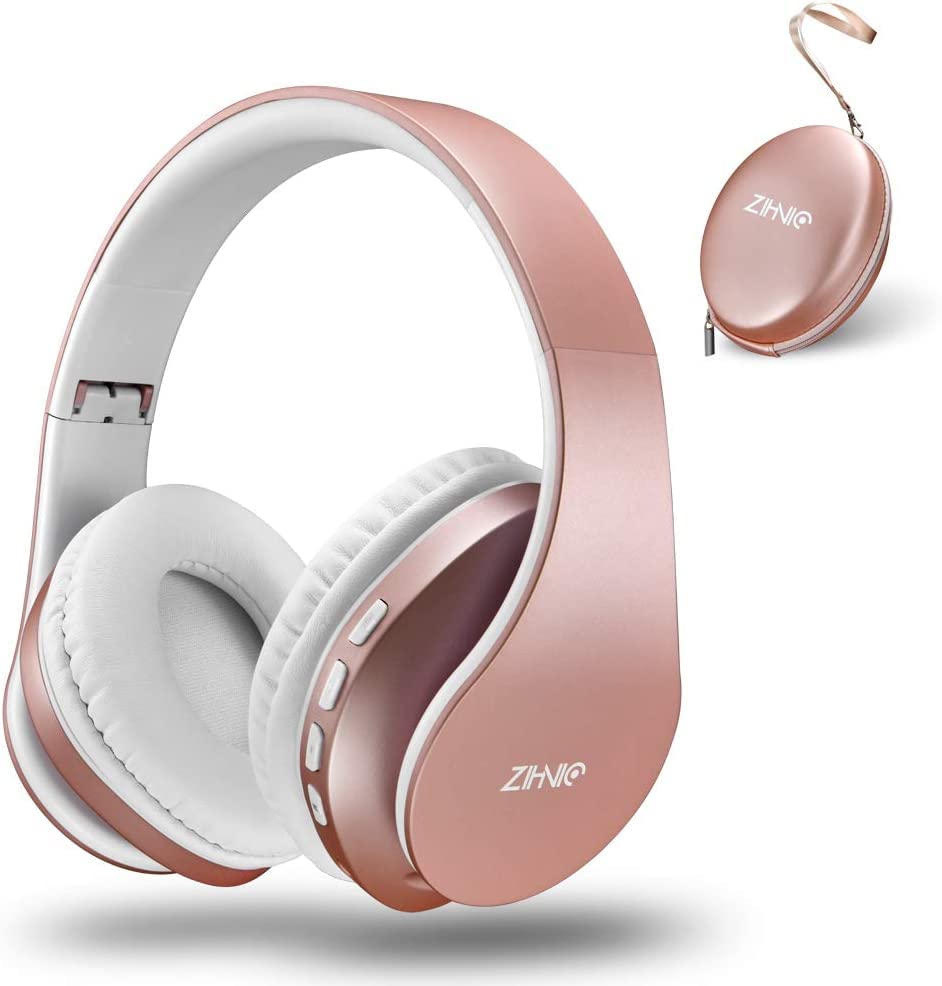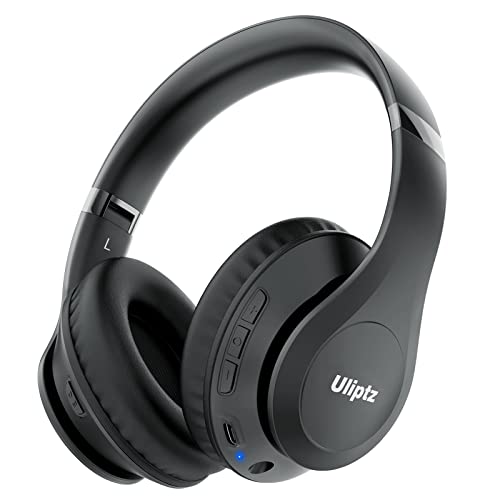7 Things About Headphones Wireless You'll Kick Yourself For Not Knowin…
페이지 정보
작성자 Kiera 댓글 0건 조회 15회 작성일 24-04-13 06:04본문
 What to Look For in Headphones Wireless
What to Look For in Headphones WirelessWireless headphones allow you to move around freely, without being tied to an audio source. This can be great for those who are restless while working from home or needs to move around during calls.
Digital audio signals are composed of bits, which are the building blocks of computer language as a series of 0s and 1s. These digital signals are transmitted to your headphones via Bluetooth which is a wireless radio transmission technology.
Noise-Canceling
Noise-canceling headphones will help you concentrate in a noisy office or Bluetooth Head Phones get some rest on a train or plane ride, or simply listen to your music with peace. These headphones are more expensive and require active noise cancellation, which uses electronic circuitry that blends in an inverted form to reduce your perception. This requires more power, so the headphones typically have a battery that has to be replaced or recharged periodically. The addition of electronic components can increase the weight and size of the headphones, too.
Most manufacturers today offer noise-canceling pairs that are wireless and Bluetooth-connected which is a natural fit due to how popular these features are among audiophiles. Wireless ANC models are also available, but they are less common. Bluetooth headsets are usually equipped with control buttons and voice integration for Siri, Google Assistant, and Alexa. They also provide high-resolution audio codes that enhance your listening experience.
ANC headphones come in a variety of styles, ranging from lightweight and sleek to luxurious and elegant. You can also buy earbuds that are sports-friendly, designed to stay in place and remain sweatproof even during intense exercise.
The quality of sound produced by headphones is dependent on their drivers, microphones, and speakers. They must be able make clear voices while blocking ambient noise. Some of the best noise-canceling headphones have excellent sound quality that allows you to listen to music as if playing in a concert hall.
The majority of modern headphones come with a variety of additional features, including the ability to switch between ANC modes, or a transparency mode that lets you hear the sounds of your surroundings for a brief time. Some noise-canceling headphones let you to alter the volume, and also offer the option of hands-free phone calls.
Some wireless headphones have built-in chargers and can last for hours before you need to recharge. Monoprice's BT-600ANC headphones, for instance comes with an enclosure that can hold a few charges and offers rapid charging, allowing you to return to action in just a few minutes.
Comfort
Comfort is the most important factor when it comes to headphones. If they're uncomfortable for long listening sessions, it defeats the purpose of using them. Look for generously padded headphones and earcups that are flexible enough to fit over your ears without putting pressure or pulling on your head.
Some models have touch controls on the earcups, making it easy to adjust music playback and phone calls. Some come with an accompanying app that lets you customize EQ settings to fit your hearing. Some headphones have active noise cancellation, and some come with a built-in mic for hands-free calls. This is an essential feature for anyone who travels frequently.
Many wireless headphones have a detachable cord that can be used to put them to your neck or head while you're not wearing them. You can also use the cable to connect your headphones to an audio receiver or other device like a laptop computer. Be aware that the detachable cables may cause more wear and tear on the headphones than an on-ear or over-ear model with no cord. If you're planning on purchasing a pair of wireless headphones, try them before you buy them to make sure they're comfortable.
The earbuds with wires are more likely to fall out of your ear during exercise and have a shorter battery life. In addition, their cables may get caught on your clothing and skin, bluetooth head phones causing annoying cable noise (also known as microphonics). The wireless earbuds of the V-Moda S-80 are able to avoid these issues by providing snug ear cups that remain in place even during sweaty workouts. The audio quality is great as well.
Most wireless headphones can be charged on the go which saves you time and money. Some headphones have quick-charge technology that can charge them to full capacity within two hours. This allows you to enjoy movies and music on the move.
The Sony WH1000XM5 is one of the best-sounding and most comfortable headphones on the market. This is due to their lightweight and compact design. They're one of the best headphones for travel, and come with an ANC mode that blocks out a substantial amount of ambient noise. They also come with a convenient portable charging case.
Design
The design of a headphone should be viewed with consideration by the person who listens. They should fit comfortably around the ears and feel secure. The sound quality should be good. They should provide an even sound, with a distinct presence in the low frequencies, without raising them to the point of distortion. The headphone's noise cancellation feature is likely to work. If they're equipped with a noise-canceling feature, it should effectively reduce the low rumble of buses and office chatter so that you can focus on your music or phone calls.
Some headphones are wired to the audio source. However, the majority of them are wireless. They can be connected with an accessory or transmitter included in the box or other devices. These wireless transmitters are designed to embed the audio signal into one-frequency carrier waves and transmit it in the radio frequency or infrared range. Wireless receivers take in the single-frequency carrier wave and convert it into an analog audio signal which drives the headphones' speakers.
Wireless headphones typically have buttons to control the call and audio playback functions. They also have a built-in microphone, allowing for hands-free calling using smartphones. Some wireless headsets come with a small charging case they can slide into when they are not being used.
Wireless headphones offer the advantage of being able move up to 15 meters away from the audio source without losing the connection. This lets you listen while working or commuting in the office and also when exercising or listening to music at home.
Bluetooth head phones is the most popular wireless headphone technology. It has been improved over the years, but it's not yet as good as wired connections. Other wireless headphone connections such as RF or USB are able to support higher bit rates and can provide better audio. These connections require a wire to connect the headphones to their source of audio. They're not as user-friendly. Bluetooth headsets, which can be paired directly with mobile phones.
Connectivity
Wireless headphones let you listen to music and enjoy TV without worrying about cords that get tangled. Wireless headphones connect to your audio device with tiny transmitters and receivers. They allow you to control your media without having to hold the device. Some models have noise cancellation or active noise reduction technology built in to block out background noise. They are designed to be portable and are frequently used by people who enjoy a variety of activities. They can be used for running, exercising at the gym, watching television in bed without the other people around, and so on.
Bluetooth headphones work by sending an audio signal to a radio receiver within your headphones. The radio receiver is responsible for converting digital bits into an analog signal that is recognized by the speakers' drivers of the headphones. This analog signal is then used to produce sound. Wireless headphones are a form of active component that requires a power source for their internal hardware to function. Wireless headphones, on other hand, are passive components that leave the speaker driving up to the audio source.
Wireless headphones transmit audio signals by using radio waves or infrared. These electromagnetic waves are a form of vibration that transmits energy from one point to another. These vibrations can trigger oscillations of magnetic and electric fields that transmit information from one location to the next. Radio waves are electromagnetic waves that can travel through almost any medium including water and air.
Wireless transmitters are a vital component of any headphones model. The transmitter is responsible for embedding the audio signal into a wireless format that can be sent to an appropriate headphone receiver. Wireless headphone transmitters can be standalone devices that plug directly into an audio source or they can be integrated into audio devices that are advertised as wireless.
The quality of sound that you hear with wireless headphones is determined by how the receiver and transmitter are tuned. Some manufacturers incorporate a specific audio codec in their blue tooth headphones to ensure high-quality sound. For instance Sony's LDAC technology allows the headphones to transmit audio data at three times the rate of normal Bluetooth and produces more clear and detailed sound.

댓글목록
등록된 댓글이 없습니다.

